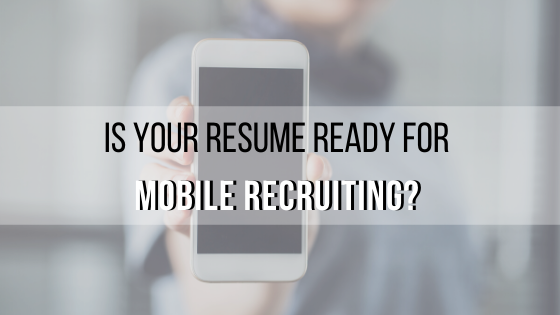How Being Private can Negatively Affect Your Job Search
A high-level executive is eager to find a new job. He uses Facebook for personal things, is present on Linkedin but barely uses it, and sees no value in Twitter. He states he is looking diligently at job boards and networking strategically but has gotten nowhere in his search. He believes it is vital to maintain his online privacy, and it seems to be working: he is so private, no one can find him! It is impossible in this day and age to conduct a job search without using these social media tools in a robust and proactive way.
There is one thing most people looking for a job may not realize:
Recruiters automatically filter out the less technically savvy from their applicant pools by using these tools. So make sure you are present in these mediums, or consider yourself filtered!
There are certainly legitimate safety reasons for some to remain under the radar and off the grid. I am not advocating publishing your social security number or the answers to your banking security questions on public domain. However, with the exception of a select few individuals, both passive and active job seekers need to have a branded presence on the web to ensure the other aspect of their search strategy can be effective. Everyone must have a vibrant online presence in order to be found by the right people--those who can lead to the next opportunity.
Have at least 250 LinkedIn connections.
You are already on LinkedIn, so make it work for you. If you consider people on all levels from many different aspects of your life (professional employment, education, childhood, family, friends, neighbors, vendors, clients, service partners, personal services, hobby enthusiasts, extracurricular activities…you get the idea.), you can reach this connection threshold. This will improve your qualitative search result dramatically to yield you better job search leads.
Side consideration: If you are thinking, “LinkedIn never really worked for me.”, ask yourself, “Do I REALLY work it?” Would you walk into a networking event, not speak to anyone, and then come out and say “Wow, what a waste of time…no one spoke to me and I did not receive one lead!” Of course not! You need to think of LinkedIn in the same way--use it to proactively reach out to others to make it work for you.
Strategically use Facebook contacts to help your boost your job search network.
Using Facebook for mostly personal stuff is okay, but consider contacting certain people offline to connect with them and determine if you can help each other out in a professional and meaningful manner. You won’t be able to help everyone and everyone will not be able to help you, but all you need is a few key contacts to help bring you to the next level in your search.
Start using Twitter, even if you don’t tweet!
If you are not sure what to say in the 140 character limit, then don’t say anything! Instead, create an account to follow recruiters in your industry and/or discipline that post positions in which you have an interest. You can be a silent presence on Twitter until you are ready to tweet—which may be never. But until then, do not let this goldmine of opportunity pass you by.
Create a searchable webpage housing your resume, achievements and means of contact.
This page only needs to include your general location, phone and email. Specific identifying information does not need to be listed. Even general location does not matter if you are open to relocation or are looking for virtual positions or jobs that naturally require significant travel. You can even create an email address for your public page that is different from your personal email address. As hiring managers run searches for what you do, doing this ensures you can be more easily found by them.
With many cases of identity theft occurring every year, online privacy is obviously extremely important. But when you need to advance your career, get out of a dysfunctional company or end your time in transition, there is a way to prudently advance your online professional profile that doesn’t risk your security. Otherwise, you have to consider the consequences of staying hidden and determine if it is a cost you are willing to pay in the form of stagnant career or unemployment.
Written by Lisa Rangel, Executive Resume Writer











.png?width=690&name=Job%20Search%20Adivce%20(1).png)